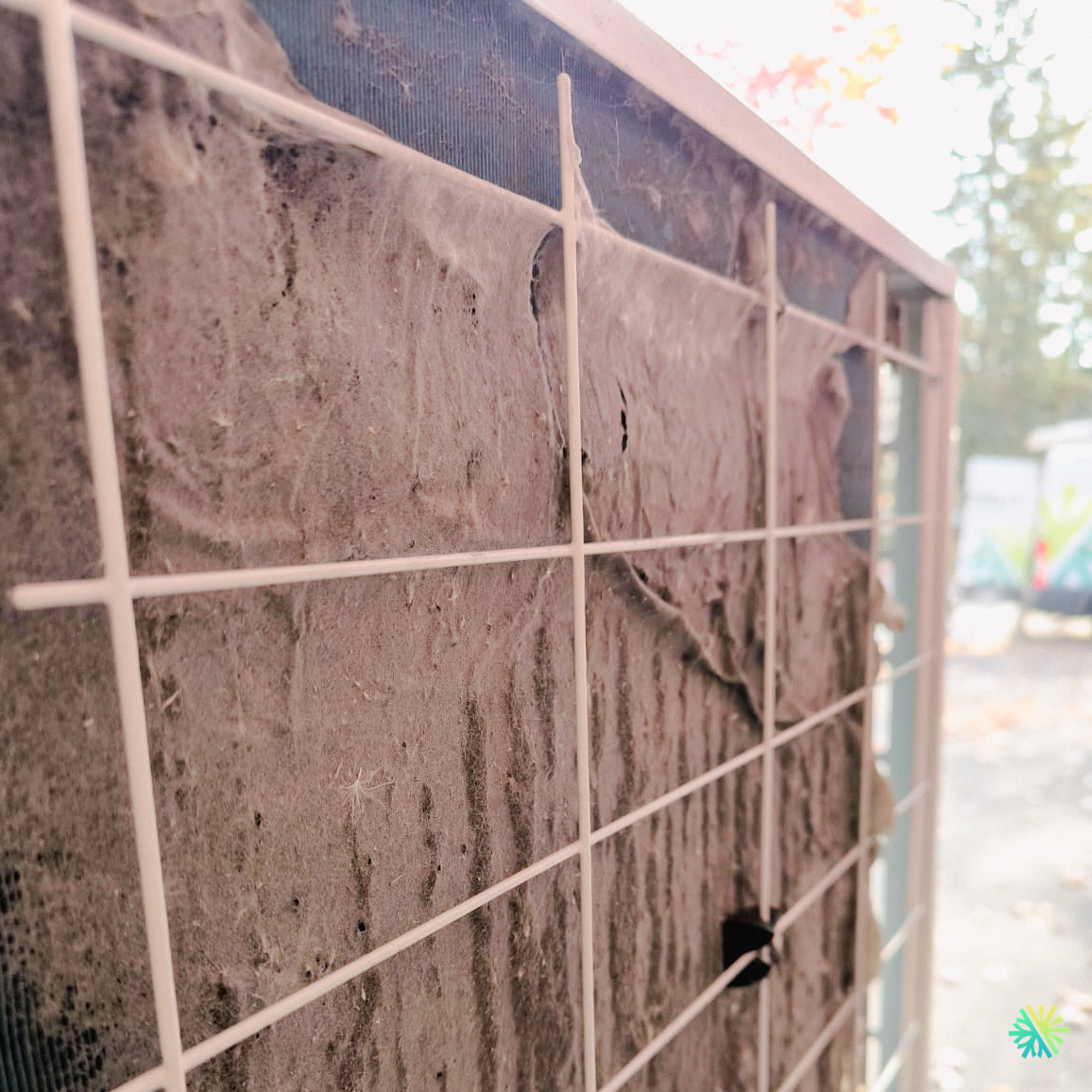A complete HVAC solution designed for the most vulnerable: the inspiring example of a school building on the South Shore
On the South Shore of Montréal, in a discreet but vibrant elementary school, a worrying situation recently caught the attention of the AirGreen team. Several students—most notably a young boy with severe asthma—were seeing their health worsen as the months passed. The symptoms—persistent coughing, shortness of breath, nighttime attacks—visibly intensified while he was in class. After several medical consultations, a diagnosis was confirmed: the building’s indoor air was poorly ventilated, saturated with allergens, and excessively humid. It was in this context that our team was called in for a high-stakes ventilation project with serious human implications.
Why school ventilation is critical for respiratory health
In school environments, indoor air quality has a direct impact on well-being, focus, and children’s health. Studies show that poor ventilation encourages:
-
The accumulation of indoor pollutants (CO2, fine dust, mold spores)
-
Excess humidity, which promotes the growth of allergens
-
Conditions that trigger asthma attacks and respiratory infections
This is why our mission wasn’t just about improving thermal comfort, but about creating a healthy learning environment conducive to both well-being and education.
Technical assessment of the site: alarming findings
When our team arrived on-site, we quickly identified several critical issues:
-
A lack of mechanical ventilation systems in multiple wings of the building
-
Windows that were sealed shut or difficult to open
-
An average CO2 level exceeding 1600 ppm in certain classrooms, far above the recommended threshold
-
Relative humidity levels regularly surpassing 65%, contributing to hidden mold growth behind some wall panels
Given these findings, we immediately proposed a complete, tailor-made solution adapted to the school’s layout and budget.
The system installed: a high-performance centralized ventilation network
We selected a heat recovery ventilation (HRV) unit from Venmar AVS, model E15 ECM, known for its durability, energy efficiency, and compatibility with institutional environments. Here are the technical details:
-
Maximum airflow: 261 CFM (cubic feet per minute)
-
Counterflow heat exchanger offering thermal efficiency above 75%
-
Integrated MERV 13 filters to capture allergens, dust, and fine particles
-
Smart CO2 sensors connected to each unit to automatically adjust airflow based on occupancy
-
Centralized touchscreen control panel, user-friendly for the school’s maintenance staff
The unit was installed in an unused mechanical room, with a network of insulated galvanized steel ducts serving both main wings of the school. Skilled mechanical work was required to discreetly integrate the ductwork into existing drop ceilings without compromising classroom acoustics.
Technical challenges and how we solved them
As with any retrofit in an existing building, we encountered several challenges:
Limited accessibility
Some areas were only accessible outside school hours. We scheduled our work to minimize disruptions, operating in the evenings and on weekends.
An old building with complex partitions
The building, constructed in the 1960s, had concrete walls and uneven ceiling spaces. To navigate this, we used dust-controlled coring tools, minimizing debris and expediting the installation.
The need for acoustic discretion
Noise control was critical—especially in a learning environment—so we installed noise attenuators at each supply vent, keeping the sound level under 30 dB, virtually inaudible in a classroom.
Concrete results: a visible transformation
Less than a month after the system went live, the results were clear:
-
A significant reduction in CO2 levels, consistently kept under 800 ppm
-
A reduction in relative humidity, stabilized around 45%
-
Noticeably fresher, drier air, free of odors
-
And most importantly, a child with severe asthma whose symptoms dramatically improved
The school administration also reported improved student focus and a drop in respiratory-related absences.
Why choose AirGreen for school and institutional ventilation?
At AirGreen, we don’t just install HVAC systems—we’re committed to creating healthy, livable, and efficient environments, tailored to the unique demands of each building. Our approach is based on:
-
Thorough analysis of the current air quality
-
Custom-designed solutions that balance efficiency, comfort, and budget
-
Flawless execution, discreet and safe, even in active school environments
-
Unmatched local expertise covering Montréal, Laval, Longueuil, the North Shore, and the South Shore
Practical advice for schools and daycares in the region
If you’re managing a facility that serves children, here are a few key recommendations:
-
Regularly monitor CO2 and humidity levels in indoor spaces
-
Opt for mechanical ventilation systems with advanced filtration
-
Avoid standalone air purifiers that don’t expel stale air
-
Consider a full HVAC audit from trusted experts like AirGreen
A successful mission… and a child who can finally breathe easier
This ventilation installation on the South Shore remains one of the most meaningful projects we’ve completed. It’s a strong reminder that HVAC isn’t just about comfort—it’s a vital part of public health, especially in schools. At AirGreen, every project is a chance to make a real difference in people’s lives.
If you’re responsible for a school or public building, contact us to discuss your ventilation, air conditioning, or heating needs. We’re proud to contribute—one classroom at a time—to a healthier Québec.

